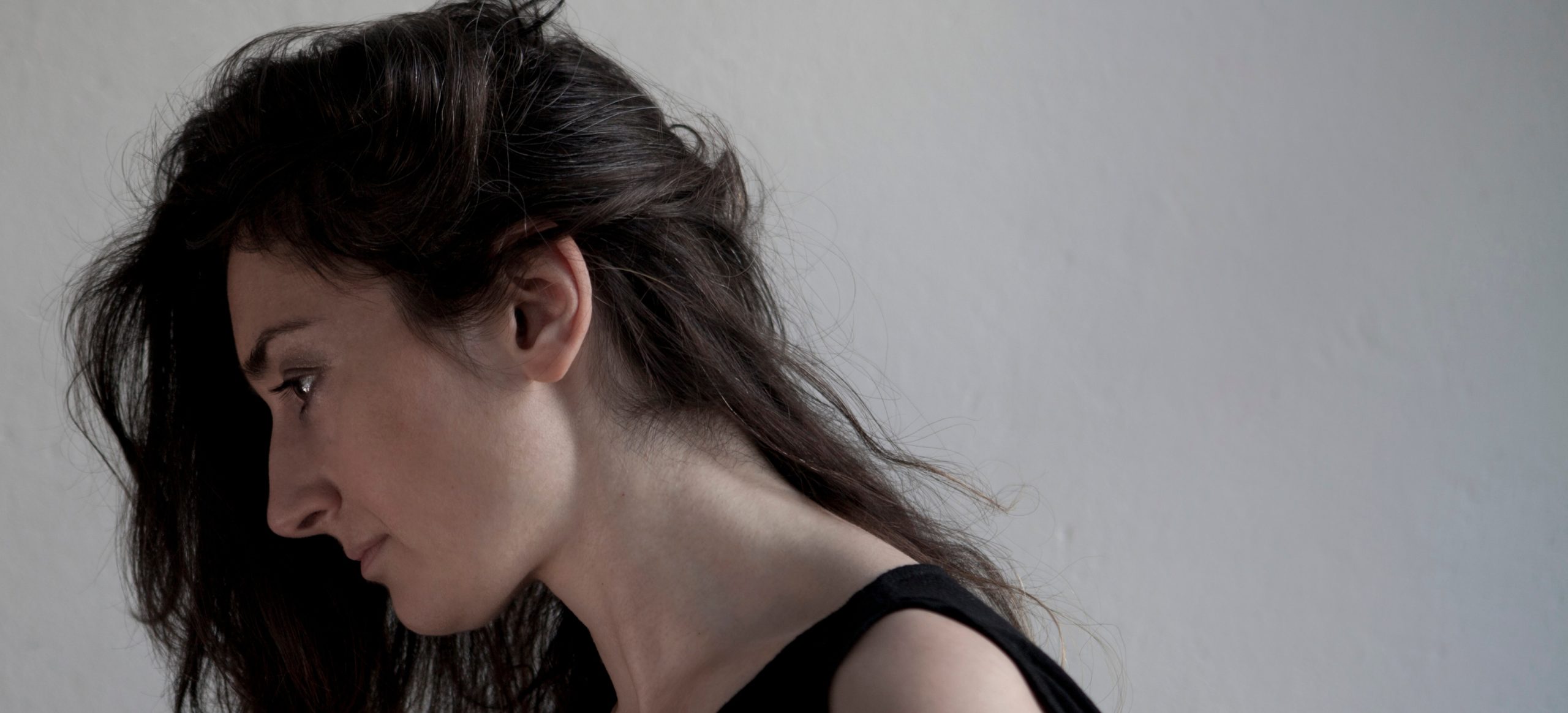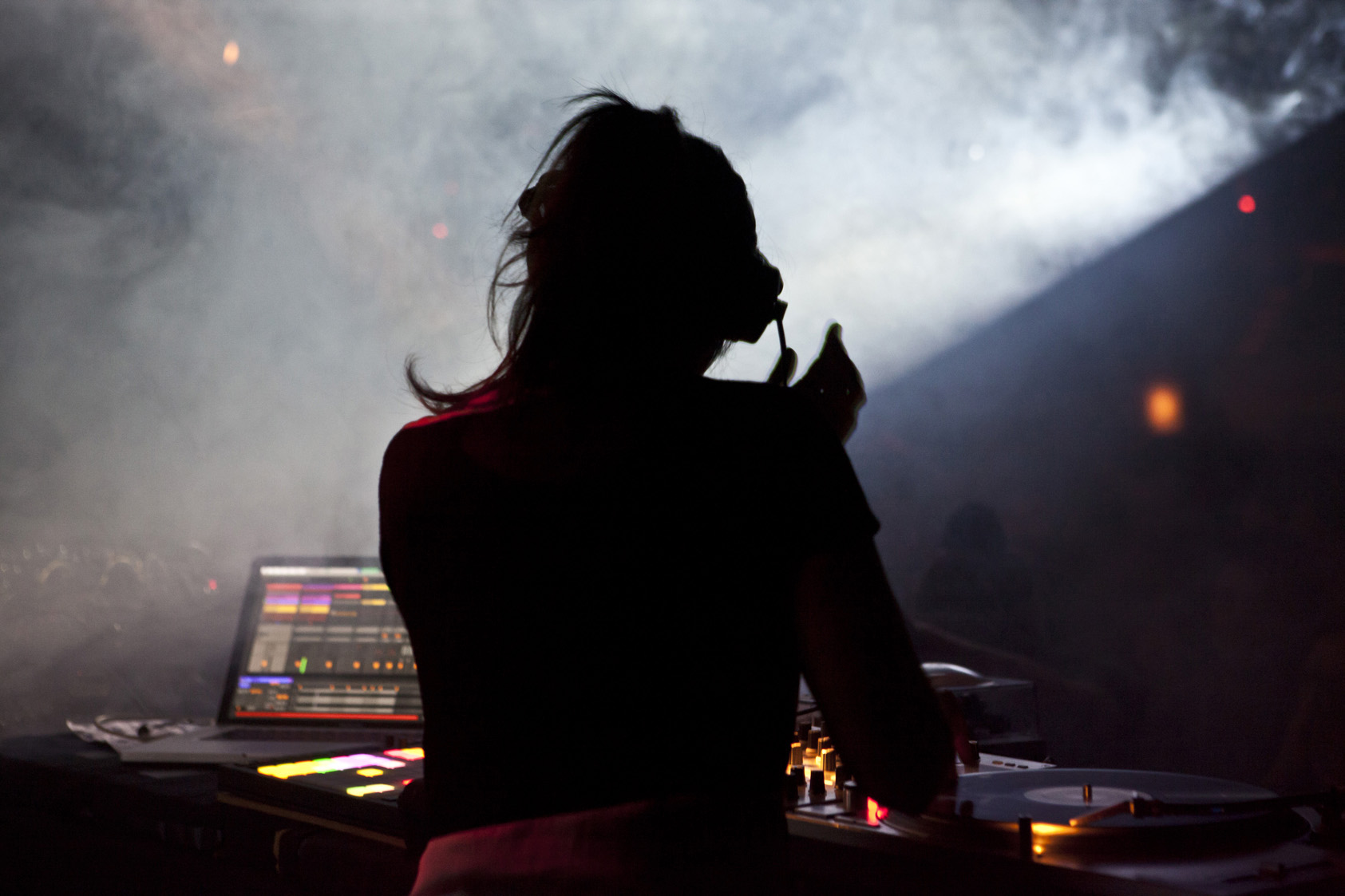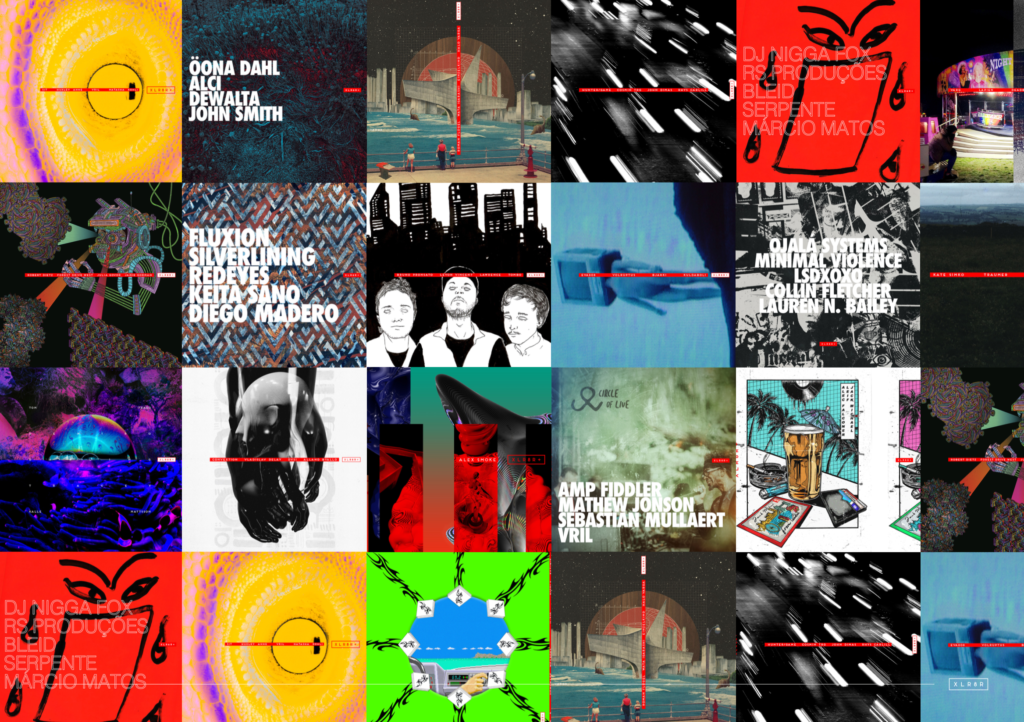Ask the Experts: Paula Temple
A leading name in contemporary techno answers your questions.

Ask the Experts: Paula Temple
A leading name in contemporary techno answers your questions.
Paula Temple has been pursuing her own musical path for over 15 years. As a self-confessed “noisician,” she specializes in a noisy, phantasmagoric techno sound, where every moment of silence seems deafening. Such refreshing high voltage music has placed Temple at the forefront of contemporary techno.
Temple first appeared in 2002 with her The Speck of the Future EP via Chris McCormack’s Materials label—from which Jeff Mills lifted “Contact” for his Exhibitionist release. She then took time away from the studio for some time—during which she spent time teaching music tech to underprivileged kids—before R&S Records put out her 2013 Colonized EP and 2014’s Deathvox EP. The legendary Belgian label also released Temple’s remixes for The Prodigy in 2015, just after she had founded her Noise Manifesto label. It was here that she released “Gegen,” a techno favorite typically rich in sound design, and launched her Decon/Recon collaboration series. Elsewhere, Temple contributed “Oscillate” to the final split series of Modeselektor’s 50 Weapons label in October 2015 and has also remixed Perera Elsewhere, The Knife, Peaches, and Planningtorock.
In 2001, Temple also co-developed an innovative live performance MIDI controller called the MXF8, one of the first of its kind for music technology that ultimately shaped her current style of hybrid live/DJ performances. Blurring the lines between producer, remixer, and DJ, Temple layers between her own live pieces, edits, and tracks, building powerful, driving sets. Temple is also currently producing her debut album, aiming for release at the end of the year, but has taken the time out to answer a selection of your questions that you’ve sent in over the past month or so. You can find her answers below.
Hello Paula! Hope you are doing well. First of all, I would like to tell you that never before I have felt anything like what I felt after hearing you live for the first time. I literally cried with happiness after I left the room. That moment changed my perspective of music completely. I am no producer, nor a DJ, but I recently bought a console and want to start. Now I know that this question could be a little boring since you are a professional artist, but I want to produce techno music and also play it / mix it live. Do you know of any kind of seminars or courses anywhere in the world where I could come and learn how to produce and mix techno in a professional way, from the beginning? Also, could you advise me some tips of what should I begin with, what kind of software and all that stuff? I would really appreciate any answer. My biggest dream ever is now and it is to become a professional techno DJ and maybe a producer as well. — Bartek
Bartek, thank you, it means a lot to me what you wrote and I am very happy to hear you want to make techno music. I am completely self-taught with over 20 years of figuring out techno production by myself. So, I am not sure of any courses for producing techno. I use Ableton Live for ninety-five per cent of my productions. In fact, I spend more time every day on Ableton Live than I do sleeping! So, I would recommend learning this program. Ableton runs a yearly conference called LOOP, and all my artist friends who have been there say it is very inspiring for their creativity. And creativity is the most important part of techno. I would recommend exploring distortion, compression, and reverb techniques to find your own character with the sounds you make. Don’t be afraid to explore or go over the edge with the techniques either, because you may get surprising results and then find your own techniques in the process. Also, check out the list of recommended schools and music technology centres on the Ableton website as it would be good (and less lonely) to be in an environment of learning with other people. In Berlin, I know Ableton also runs special workshops on a regular basis for free.
So, a few friends (who love your music so much), my wife, and I are starting a design/music/performance crew in our city which is very far from the cultural domain of Rio and São Paulo so we are pretty much weirdos here. This is nice mostly but sometimes it can be very challenging, so you can guess that Noise Manifesto is one of our greatest inspirations. Well, thank you in advance for that! So… maybe my question is a little strange too: we have the artists, the ideas (open), some tools, some contacts, lots of sassiness, and little reference. What the hell do we do now? — Dayanne Aguiar
Dayanna, amazing to hear of your crew! That’s a big question to ask, but from what I have seen of other crews around the world making a local scene happen, it is about building trust with your crowd and with each member of the crew. By doing this, they will know you are consistent and genuine, and, in return, they will want to keep supporting your artists, events, releases, and, concepts. The most successful crews I have seen are when each member is clear about their role and take it on with full responsibility and pride, whether that role is graphic designer, label manager, artist booker, driver, sound technician, event planner, security, etc. When starting to invite international artists, it is about professional trust: are you reliable with paying fees on time, are artists safe and taken care of, is the sound system and technical support good, did you promote appropriately to your crowd and have a decent turnout? Being consistently good with all these factors will undoubtedly grow your reputation. There are many crews I meet that are great examples, but to name just a few for you to check out their mode of operations: DSNT in Belfast, Electric Pressure in Athens, Village Underground in London, Gegen in Berlin, Time Shift in Bologna, and Possession in Paris.
I’m just going to come out and say it. Your productions really stand out for me as being some of the best I’ve ever had the pleasure of listening to, so first of all, thank you for making such impressive sonic landscapes. My question is: how do you go about making your low-end sound exactly the same in mono as it does in stereo? It seems to be my biggest flaw at the moment is getting the sub-frequencies to really shine in a mix. Any light you choose to shed on this matter would be extremely beneficial. — Luke
Luke, thank you for the compliments. I actually don’t worry about or pay attention to the bass precisely until the track is finished and being mastered. The mastering stage is when the bass frequencies are really sorted out. During the creative and production stages, I am interested in the character and energy of the sound working together to convey what I feel.
I often resample my kicks and low end with distortion, which is always recorded in mono. I also make melodies that cross into the lower bass frequencies, and to avoid this clashing with the kick or other low end, I EQ by cutting the frequency where the kick should be and side chain to the kick as well. If you listen to some productions I made, especially remixes for The Knife or Perera Elsewhere, the kick frequencies are a little higher than normal techno kicks, leaving a lot of space for bass. Then, occasionally, I will have a sub-bass kick or percussion bursts come in for extra excitement on the dancefloor.
So, back to the mastering stage: when sitting with mastering engineers, there are some tools they use that you can get hold of. A popular one being used is by Brainworx called bx_control, and using mid/side you can mono the lower frequencies you feel, say under 120Hz, and then keep the harmonics of the bass that you hear in the track as stereo. Ableton Live 10 has now added a mono bass function on their Utilities device which is an easy basic way of doing a similar job controlling the mono/stereo field of frequencies.

How spontaneous can you be in terms of track and clip selection during an Ableton Live set, and do you prefer to plan your soundscape?
If you have set up your Ableton Live project with enough clips then you can be as spontaneous as you like. I love to plan and I am obsessed with sound, so I am always testing layers of sounds together to see what I can build to create my own story. Preparation and trying ideas is part of the pleasure I get from the music and looking forward to an event. It appeals to the sound designer in me. There are some special events where I relish creating soundscapes from edits and my own sounds, without going too over the top, as that could be fatiguing for the audience. One key event I treat more like a work of cinematic techno art than just a techno set is Katharsis, which happens once a year in Amsterdam.
My bonus question is: could you please tell me the ID of a track you played at Nuits Sonores in which the drop goes like “the Devil himself,” and then the gates of hell appeared right behind you? I’ll never forget this, it touched me.
“The Devil Himself” is by the techno artist Uun, track title “One Occult Vision.”
My questions for Paula are the following: As a producer how can you describe your workflow? What is it influenced by? If you could mention your early starts where it could have been the finances as limitation what advice would you give for getting things started (with the bare minimum) and what was your approach to production?
Workflow is:
First session: Create freely without thinking about being strictly bound to techno, by giving myself one rule to experiment with, and then record every experiment as audio in Ableton Live. Some examples of rules I give myself are: try 60bpm, or make a sound that represents the final hours of the human race, or detune everything. After a big recording session, save and forget about it for another day when I am fresh to listen again to these new recordings. When I go into a creative session, I am usually influenced by social injustice that upsets or makes me angry so that I want to shout or speak against, or it could be a fascinating scientific discovery or technology breakthrough I have just learned about.
Second session: Make new drums and patterns. Resample previous kicks and percussion by experimenting with distortions and effects. Record everything.
Third session: Go through recordings from sessions one and two, trust my feelings in the moment of what is influencing me that I want to channel into music, then see if any of these recorded sounds and beats work well together to develop into a track. If the sounds are not unique enough, I usually do not feel compelled to develop them further. I want to be thrilled or surprised at myself. If I have found that spark, then I take as many sessions as needed to finish the track. At this stage, it is about arrangement and removing as many sounds as possible that distract from the essence of the track. It’s a fine balance of not sounding too empty and not sounding too busy. At this stage, I am imagining a story this track is telling as it develops. Sometimes, however, I may have worked on a track for too long and ended up losing its original spirit. Other times, the music comes together in five minutes and with its imperfections is just perfect the way it is.
Final session: Mix properly.. EQ, compression, automation.
I saw you in May at Nuits Sonores and this day you organised was mental! Anyway, I noticed you are wearing earplugs while mixing, and I would like to know what brand/model you are using. I try to protect my ears as much as possible and I have tested a lot of different products but none really fit my need for protection and sound quality. Thanks — Alexandre Meylan
I use Elacin ER-15. I have been using these earplugs for 20 years. Currently, it is the third pair of this brand/model I own, as the previous two I lost over the years. These are moulded specifically to your ear and you can choose the filter for decibel reduction, usually 15dB or 25dB. In a loud environment, it can take a little getting used to, but I have realised it is best to put them in before entering the loud space, and allow myself at least 10 minutes to adjust myself to the sound reduction in front of the booth monitors. When I am mixing with earplugs I get to enjoy the feeling of loud sound, especially bass, on my body and not suffer ear fatigue or damage doing so. I have no idea how flat across the frequency spectrum these earplugs are, as they are the only ones I have used, but I am happy to be able to enjoy my set and protect my ears. They are also comfortable enough to wear for hours. Tinnitus is serious and has affected a few of my friends’ quality of life quite severely.

